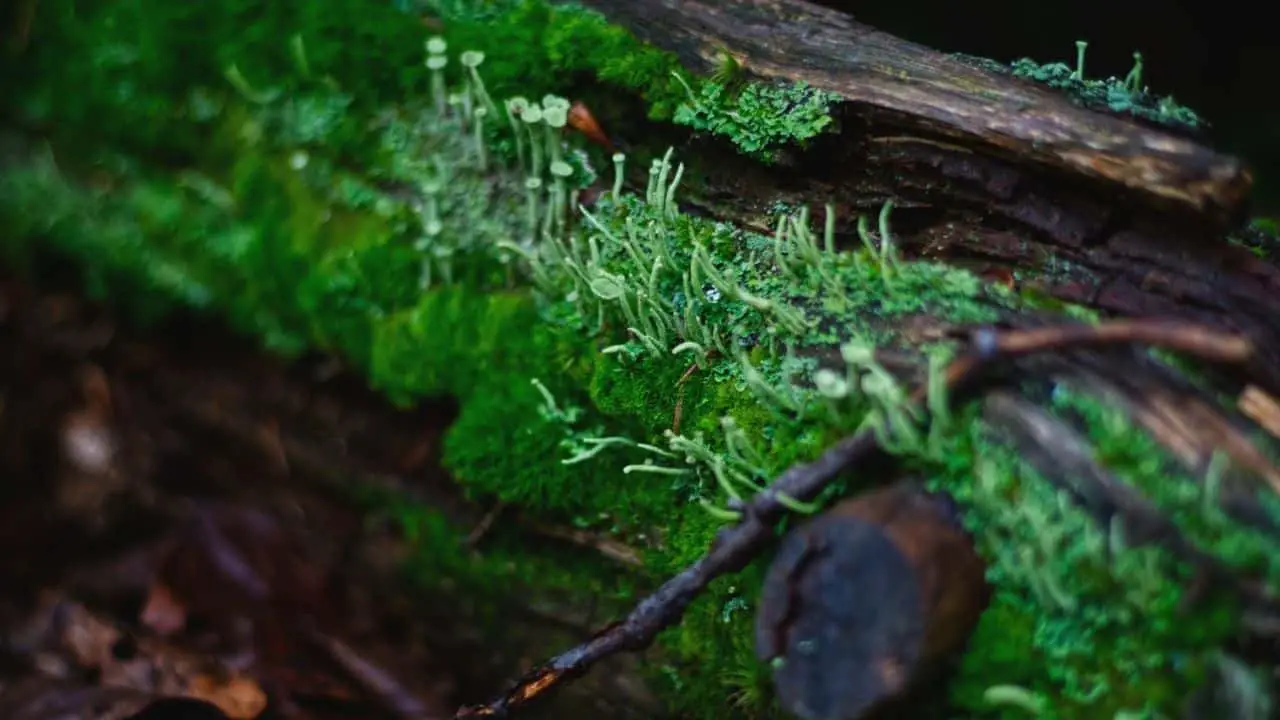How many of us dream of having an off grid homestead that provides an abundance of fruits and veggies, more meat than you can store and an overflowing amount of water that can’t be contained?! What if it only took a few hours a month to manage?
Would you want to learn more?
There is a movement afoot to rewild backyard homesteads, but what exactly is rewilding? Can it be done anywhere? And how do you do it? Keep reading to learn more.
Related: Want To Learn more about Rewilding? Check out the book that started the movement, Rewilding by Paul Jepson. It is a fantastic read that will have you converting your property back into its natural state soon after reading.
What is Rewilding?
Rewilding has come to describe the reintroduction of plants and animals to a habitat from which they have been displaced. In the process, creating more biodiversity and ecological restoration.
With the amount of natural areas destroyed due to development and agriculture, the time has come for us to consciously redesign our systems to welcome these native inhabitants.
In Permaculture, the wildlands, the area where nature is left alone, is called Zone 5. It is the area of the property that is seldom visited, where nature is allowed to flourish without mankind’s interventions.
What if we don’t have a zone 5 on our property? Can we redesign it into our system? In fact, can we design a rewilded zone 5 that can actually increase the yields within the rest of our system as well as rehabilitate nature?
Rewilding the Off Grid Homestead To Provide Abundance
Let’s dive into this concept a little deeper. Having a Zone 5 set aside for nature allows nature to heal and reproduce. These processes lead to more abundance on our homesteads.
For example, take just 10% of your property. Design this area to be able to rehydrate itself, to naturally grow native perennial plants that will aid in regenerating soils and to sustain native insects and animals. What will happen if we do this?
You now have a new forest edge that is building soil and beneficial microbes that will aid the earth on the rest of your property, providing more abundant crop yields.
Water is infiltrating into the ground instead of running off. Rivers are getting full again and stocked with fish.
Predatory insects are taking care of your pest issues and the occasional wild boar or feral chicken comes along to fertilize and provide meat for the table.
All with nature doing the work. Why did we ever cut down the forests in the first place?
Native Americans got this. In fact, most of the Americas were a thriving food forest, providing wild fruits & nuts, greens, fish and plenty meat, except the colonists did not know what they were looking at. Instead, they destroyed it and we continue to destroy it.
So let’s learn how we are going to rewild our homesteads so that natural areas can have the chance to thrive and provide for us once again.
Related: Create A Food Forest In Hawai’i: Step By Step Guide
How To Begin Rewilding Your Homestead
It’s an exciting thing to begin to reintroduce the wild onto your homestead. New plants will grow and new animal species will begin to visit. When this begins to happen you know you are doing something right.
When it comes to rewilding, I like to focus in on 3 elements that are keys to success: water, soil and animals. You can also decide to plant native plants on your own, but with those 3 keys in place you may not have to. Nature just might do it for you.
Rewilding Water
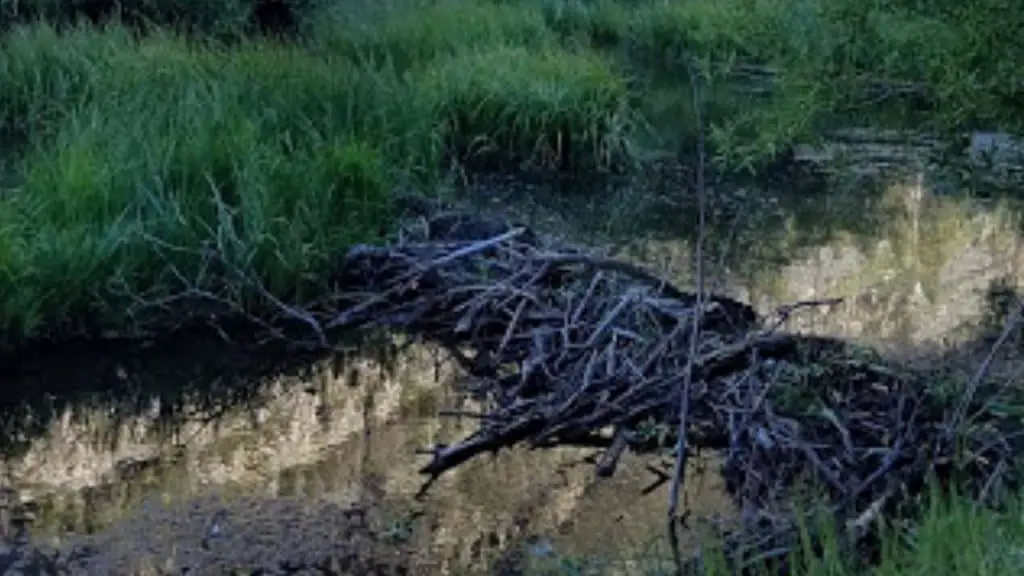
Water is the foundation of all life. Due to the fact that we are restoring a natural area that was degraded by the actions of man, we now have to implement tools that would not ordinarily need to be used in an undisturbed area.
When we are able to restore water systems, we set the conditions for native plants and animals to thrive. In fact, by focusing on water first, there may not need to be much else you need to do in order to rewild your homestead. It will simply do it on its own.
In order to rewild water, we need to allow it to infiltrate into the soil again. We can do this several ways, through water harvesting earthworks and check dams in water ways.
WATER HARVESTING EARTHWORKS
Water harvesting earthworks involve terraforming the earth to harvest water. This is accomplished through on contour swales, ponds, sunken basins, terraces, or even logs laid on contour to the landscape. The idea is to slow movement of water down, spread it across the landscape and allow it to sink in.
The method of earthwork you use depends on your conditions. Sunken basins work well on smaller residential landscapes whereas swales would be best utilized on a larger landscape.
The idea is to find all of the water entering your site and find whatever way possible to keep it there. If it must continue flowing off of your landscape, plan for it by allowing for a controlled release.
Earthworks can be constructed with hand tools, but many systems are made with heavy machinery. Once again it depends on your scale and conditions that you have onsite.
CHECK DAMS
Another way to rewild water in your landscape is through the installation of check dams within a drainage.
Check dams are porous dams made of stone or wood placed across a seasonal stream or low flow waterway that acts as a way to slow water down, but still allow it to continue on down the watershed.
This allows water to slow down, spread out and sink into the soil. It also drops sediment and debris, leaving rich nutrients onsite rather than washed away to the oceans.
Check dams should be constructed with materials that are already onsite. If you have rocks, use them. If you only have brush and small logs, use those. The idea for rewilding is to use what is already there, but if the site is degraded to the point that nothing exists, then you might think about introducing resources from outside the system.
Rewilding Soil
Allowing soil to reclaim its natural state is one of the best gifts you can give to your newly rewilded area. Healthy soil really is just one great sponge, holding exponentially more water than water tanks ever will.
Did you know that over an acre of land, soil with just 1% organic matter content can hold as much as 25,000 gallons of water. Now what if we increased the organic matter in the soil to 5%? Now the soil is holding almost 125k gallons of water!
Restoring this resource will restore native plants, animals and insects back into the ecosystem without having to introduce them yourself. All because you were able to rehabilitate your soil.
So how do we do that? I like to employ mulch and woody material back onto the landscape.
USING MULCH TO REWILD YOUR SOIL
Mulching is the application of leaves, wood chips, even compost onto the top of the soil to shade it and hold in moisture. It cools the soil and eliminates evaporation of water. It seems so simple, yet it is so effective at building healthy soils.
I like to focus on what is naturally in the area first. I live in the tropics, so my leaf of choice would probably be some sort of nitrogen fixer. But if I lived in areas with eucalyptus, then those leaves would work contrary to what most people would tell you.
Just don’t keep that soil bare. Mulch helps keep bare soil in place by diffusing the impact of raindrops on the ground, therefore spreading those raindrops out, slowing them down and allowing them to sink it to the soil (Starting to catch on to a theme here?).
Mulch also breaks down very easily, adding organic matter to the soil. In turn, we are building up the sponge like capacity of the soil to hold water. With water comes life.
USING WOODY MATERIAL TO REWILD YOUR SOIL
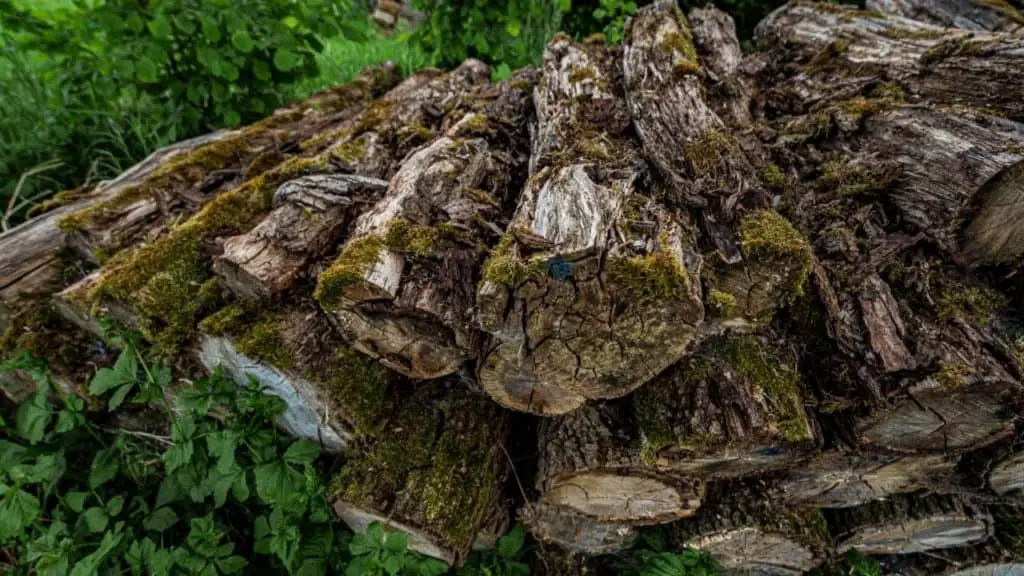
Adding woody material is a bit like adding mulch except we are using larger pieces of material. Here we are focusing on larger branches or even tree trunks that we simply drop on the ground and allow it to decompose in place.
This does a few things for our soil. First off, we now have a habitat for lots of little critters that will break down the wood and begin to breakdown the surrounding mulch and begin to incorporate it into the native soil.
The wood also acts as a source of microscopic organisms and fungi that innoculate the soil with healthy mycorrizal. The wood slowly breaks down and turns back into soil as well, creating more soil that way too.
As that wood breaks down, it also acts as a sponge. Have you ever tried to lift a log that’s been out in the elements for too long? It’s heavy! Its been soaking up all that rainfall, slowly releasing it back into the soil long after the rains have passed. This makes them great spots for tree saplings to naturally sprout up.
Rewilding Animals
Much of the work has already been done for us with regards to rewilding our homestead just by focusing on the water and soil. However, one crucial element is still missing.
Improvement of the water and soil alone may just be enough to begin to encourage animals to visit your rewilded area on their own, but sometimes you need to give them a little push.
CREATE HABITAT FOR WILDLIFE
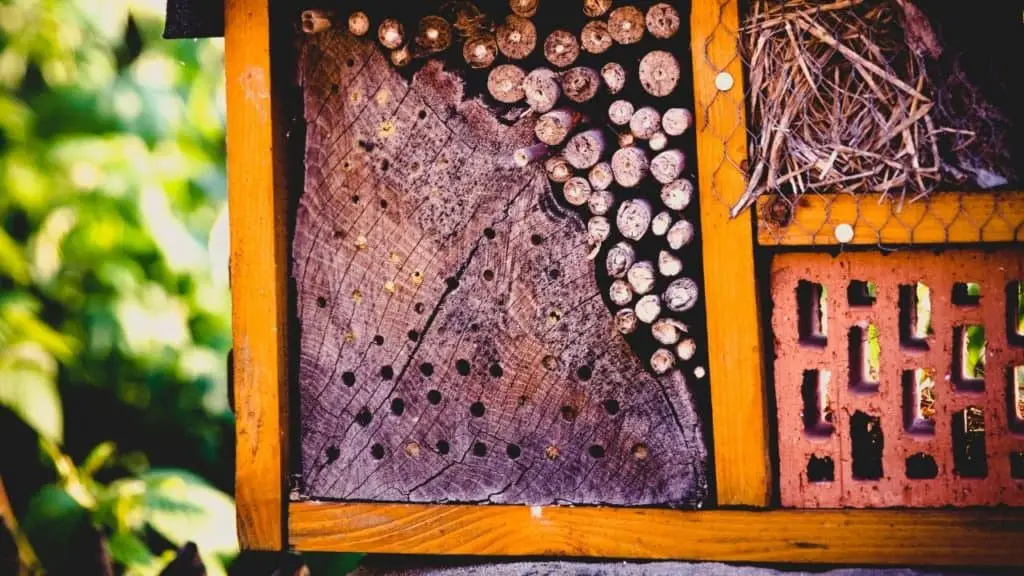
A newly rewilded area might need a little help to encourage wildlife to repopulate an area. But first, why would we want to encourage wildlife into our newly rewilded area?
Deer, gophers, pigs and more can do a number on anyone’s garden, so why encourage them? First off, we are not trying to encourage them everywhere, only in our zone 5, our rewilded area. These animals would decimate a garden patch if we encouraged those animals in a spot like that.
But we can safely encourage insects, lizards and amphibians, small mammals and birds. These creatures can be welcomed into all areas of our homestead.
Simple methods for creating habitat can involve the following:
- Old logs and branches placed on the ground
- Rock habitats
- Insect Motels
- Small ponds
- Encouraging weeds to go to seed
Each one of these methods have been proven to increase the presence of wildlife onto a site.
If a deer or gopher does come along to this newly rewilded landscape, hopefully all they leave is some fresh manure and some loosened soil, but if they do become a nuisance, you have a new meat source for the dinner table.
REWILD YOUR LIVESTOCK
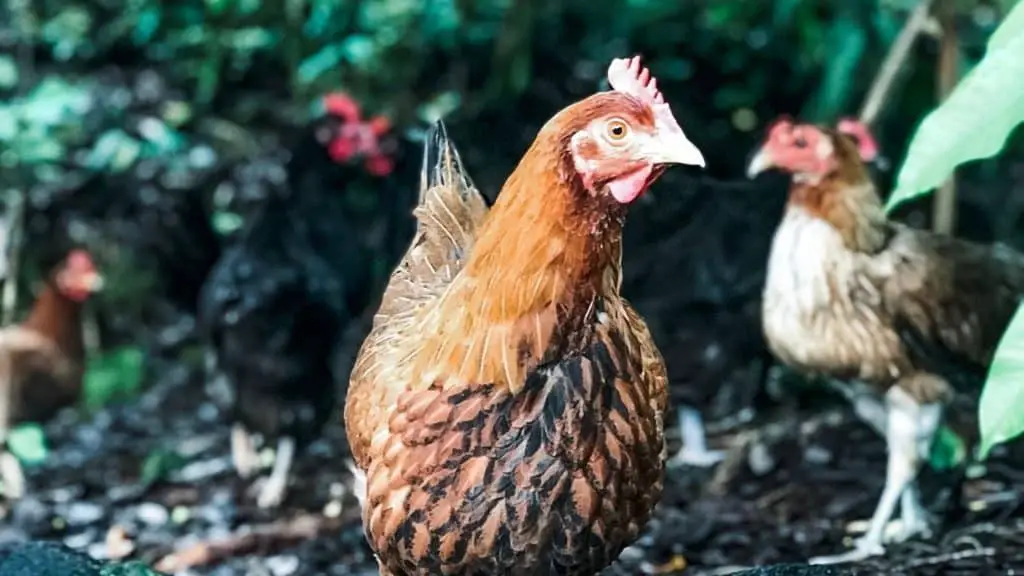
When it comes to rewilding, this is a concept that is not usually included within the whole concept of rewilding your homestead. But, What if you could rewild your livestock?
Imagine if you could allow your chickens to roam free and never have to coop them up again. Instead of keeping bees in hives made for man, maybe we could raise bees in habitats that mimic more of their natural lifestyle. I have a good friend that builds hives out of logs that bees love!
In this version of a homestead, eggs and honey are foraged for and when you need meat, you break out the trusty pellet gun and hunt yourself some chicken for dinner.
You can find ways to rewild rabbits, goats, cow and sheep if you have the right setup, but for now, chickens and other fowl would most likely be the easiest livestock to rewild onto a homestead.
Related: How Many Chickens Do I Need For My Homestead
My Rewilding Efforts On My One Acre Homestead
I have been rewilding my homestead ever since I got onto this property that I live on.
Soon after the lot was cleared, I did the opposite from what most people normally do. Instead of mowing the weeds down and encouraging grass to form, I let them all grow to flower and then to seed and something amazing happened.
Native song birds were everywhere. Eating seeds, leaving manure, scratching the ground. With them were native predatory insects and lizards that took advantage of the new explosion in growth as well.
The weeds went to seed, died back and provided mulch and seeds for new sprouts to build the soil without me having to do it.
When the time came for me to plant out my food forest, I had an ecosystem already reclaim my property. I used the pioneer trees that volunteered themselves to shade my newly planted fruit trees. The insects kept the pest population down and the birds continued to visit, depositing much needed phosphorous onto the land.
Now my site is more established. Trees are bearing fruit. Pioneer trees are gone, replaced by more climax fruit tree species. Those fruit trees produce seedlings that in turn produce more fruit trees! Mulch builds itself naturally through leaf fall of these mature plants.
Chickens roam wild, leaving eggs and self generating a constant supply of meat for free.
Endangered Hawaiian Hawks have begun to visit my site more often as well as the elusive owl. Dragonflies use our ponds for breeding, keeping down mosquito populations.
Almost zero water leaves my site and I have more soil on my property than everyone around me.
The feedback has shown that my rewilding efforts have become a success. In fact, as the system matures, the more it moves onto auto pilot and the amount of work that I have to do to keep it in balance is minimal.
Can You Rewild An Urban Homestead?
I bet you’re imagining as you read this article that this is only possible on larger acreage? It is not true, I only live on a half acre and I am accomplishing it. In fact, in the city it can almost be easier!
Animals are craving anything natural in a concrete jungle such as a city. Simple habitats can be created on a balcony. Bee hotels or simply the right plant can encourage wildlife from miles. Even something simple like a bird bath can do wonders.
There is no excuse not to set aside some wild space, no matter where you are. You may not be encouraging megafauna back into your city block, but the critters that do find your newly rewilded place surely will thank you for it.
Homesteadinhawaii.com is a participant in the Amazon Services LLC Associates Program, an affiliate advertising program designed to provide a means for sites to earn advertising fees by advertising and linking to Amazon.com. This site also participates in other affiliate programs and is compensated for referring traffic and business to these companies.
